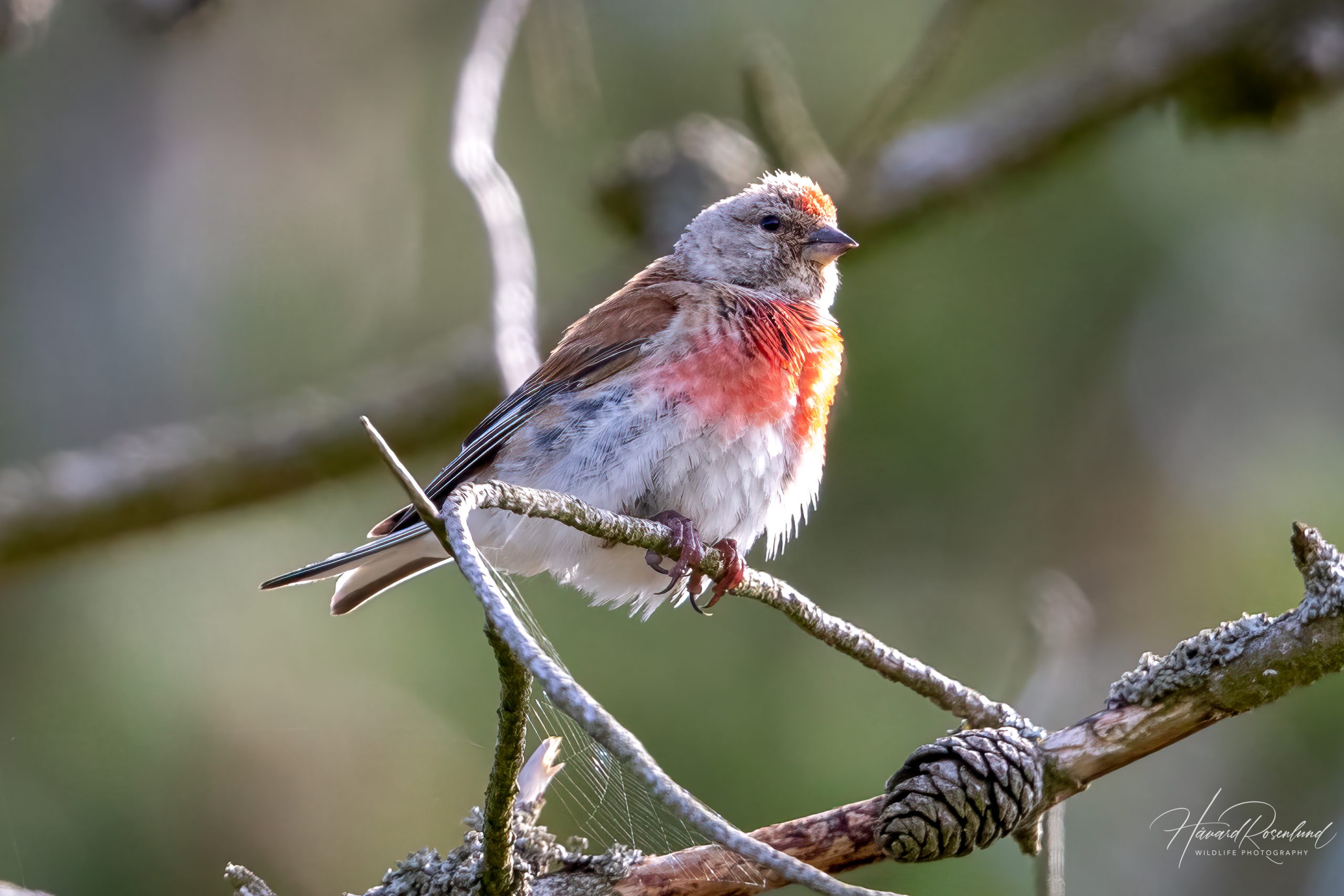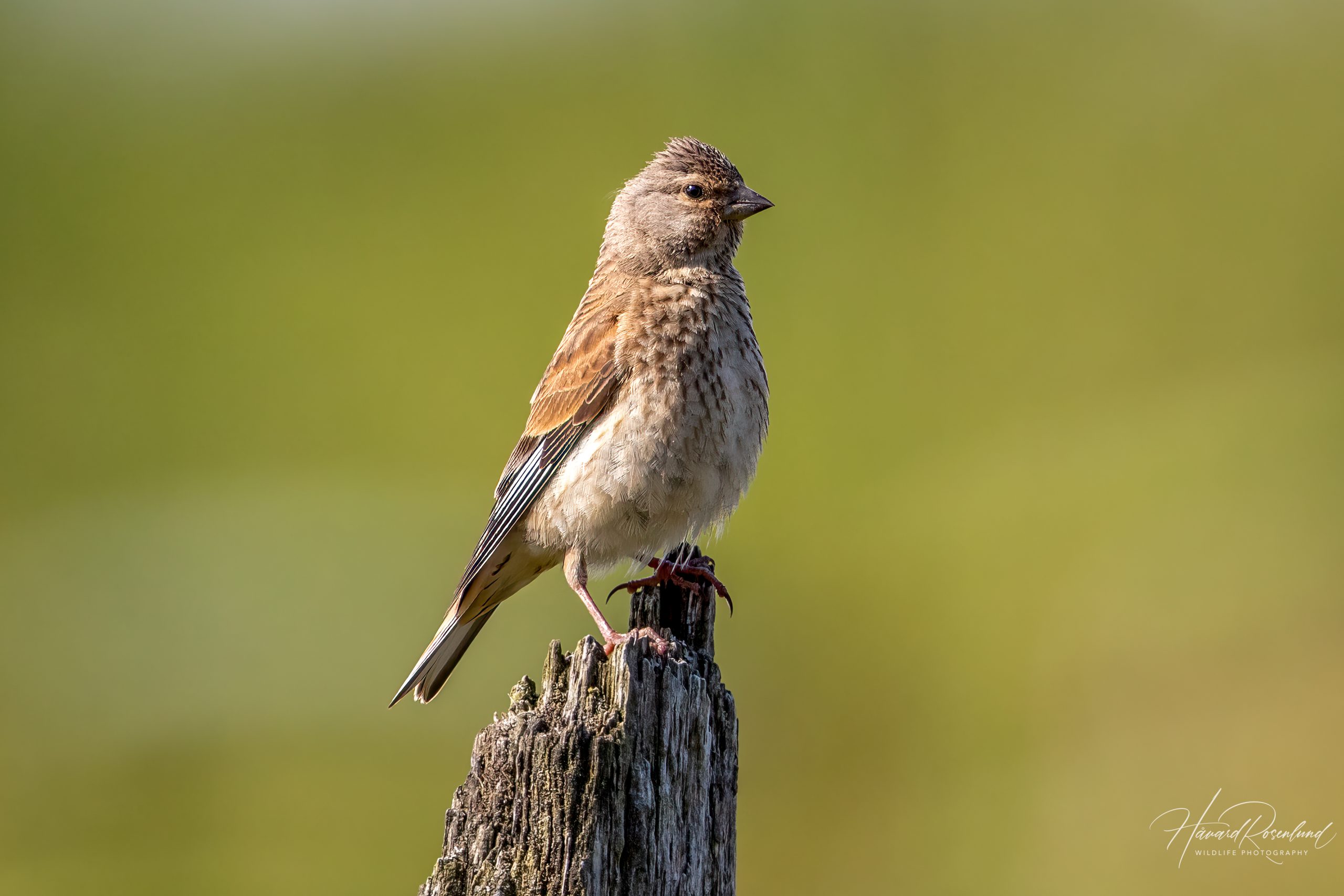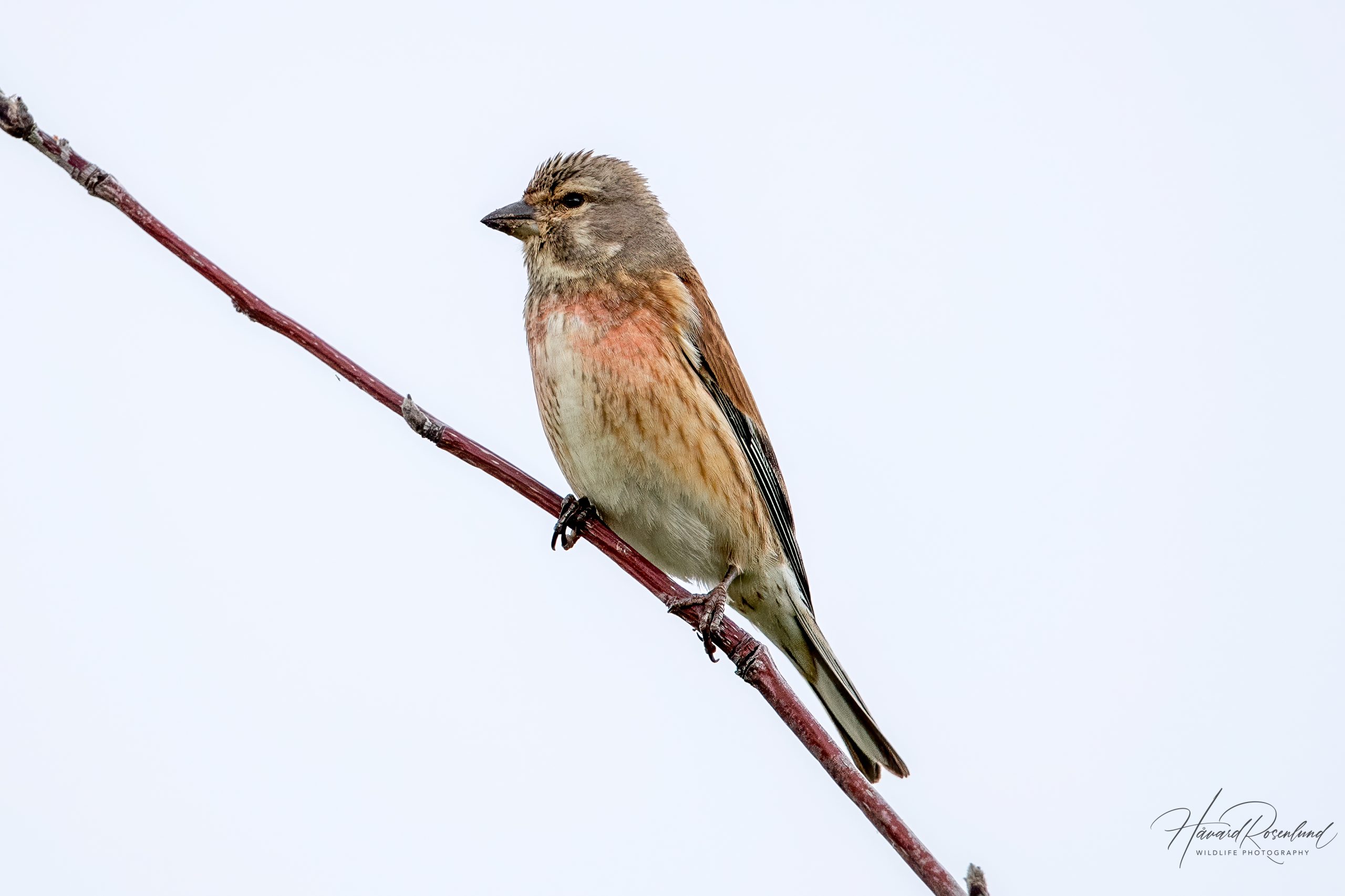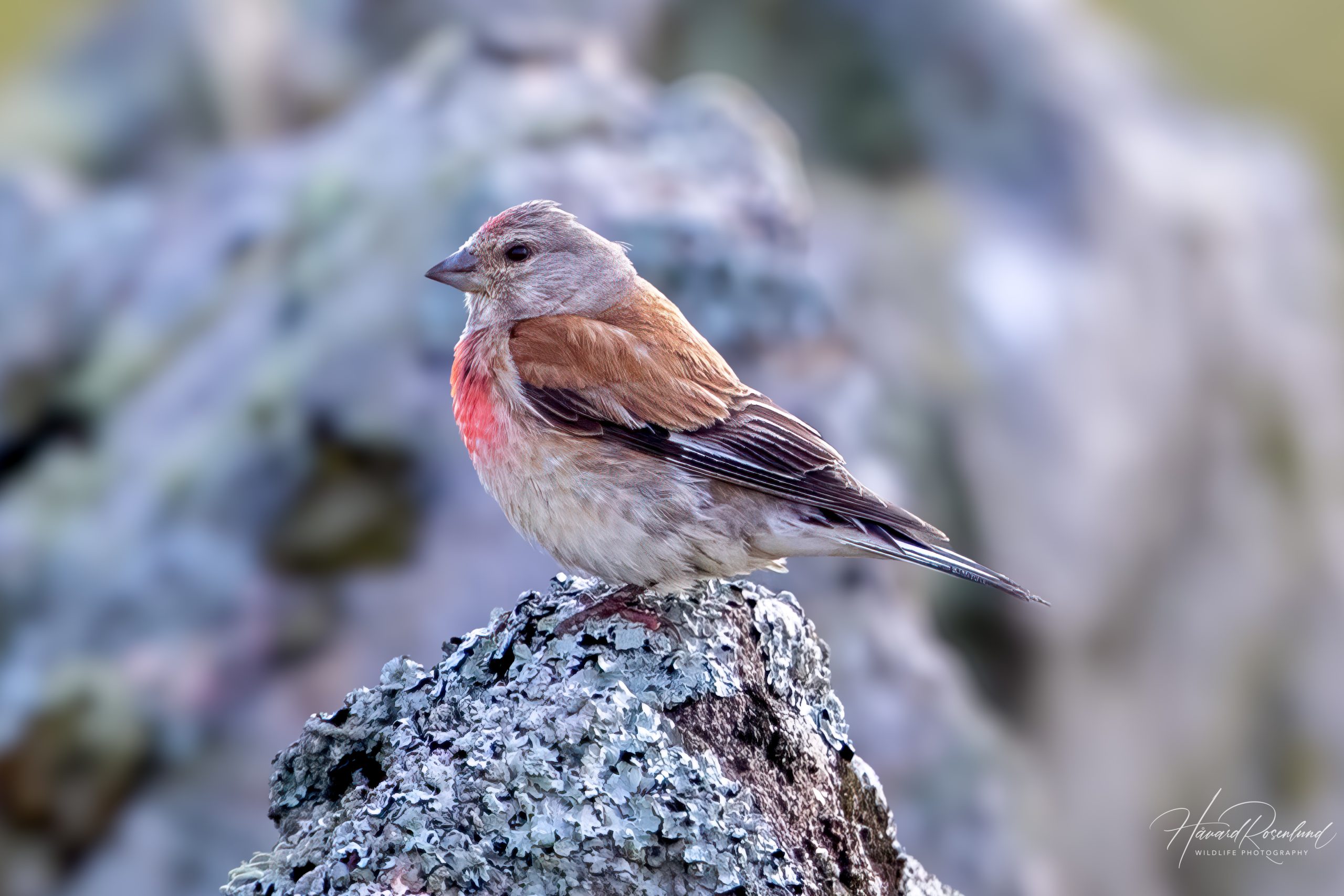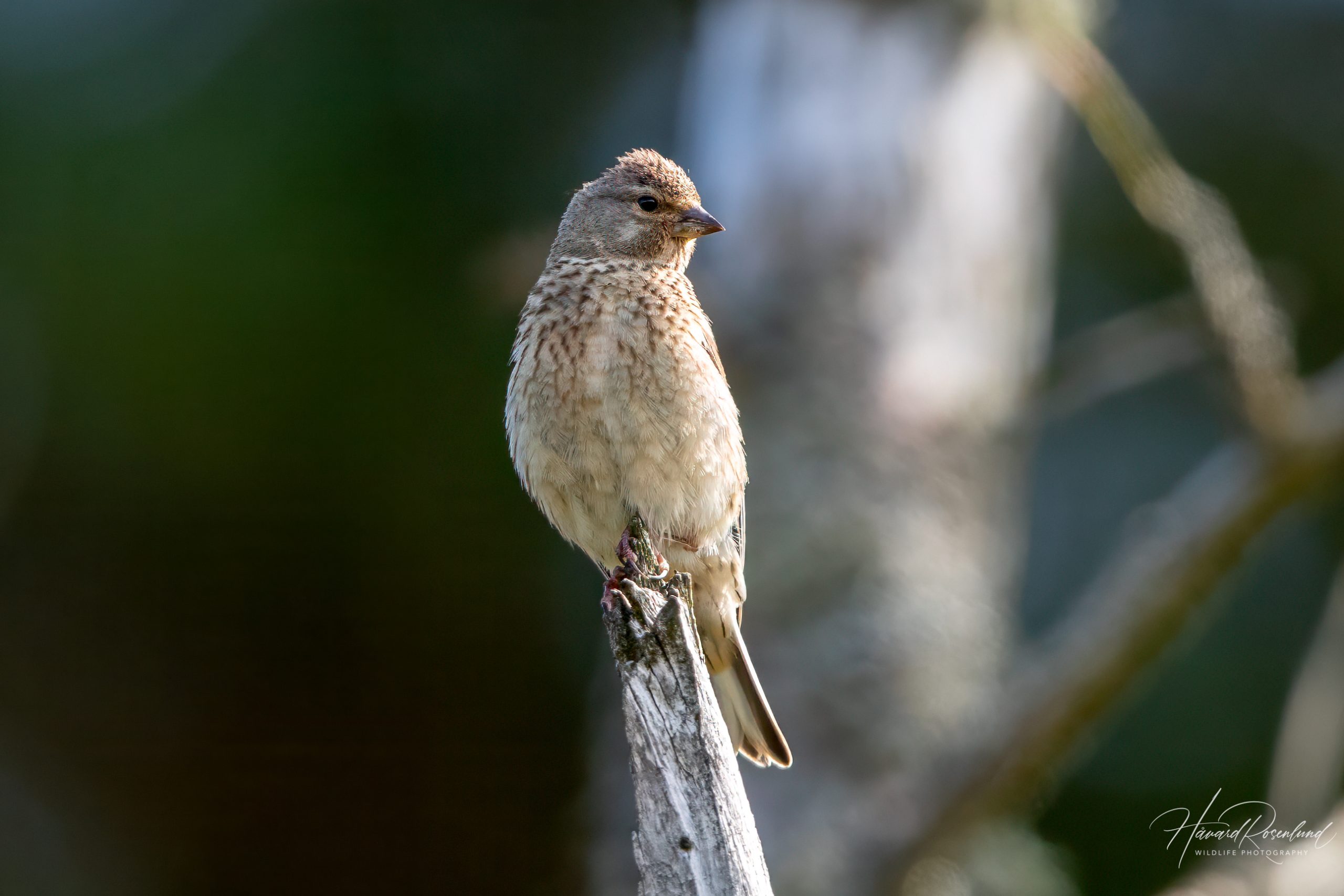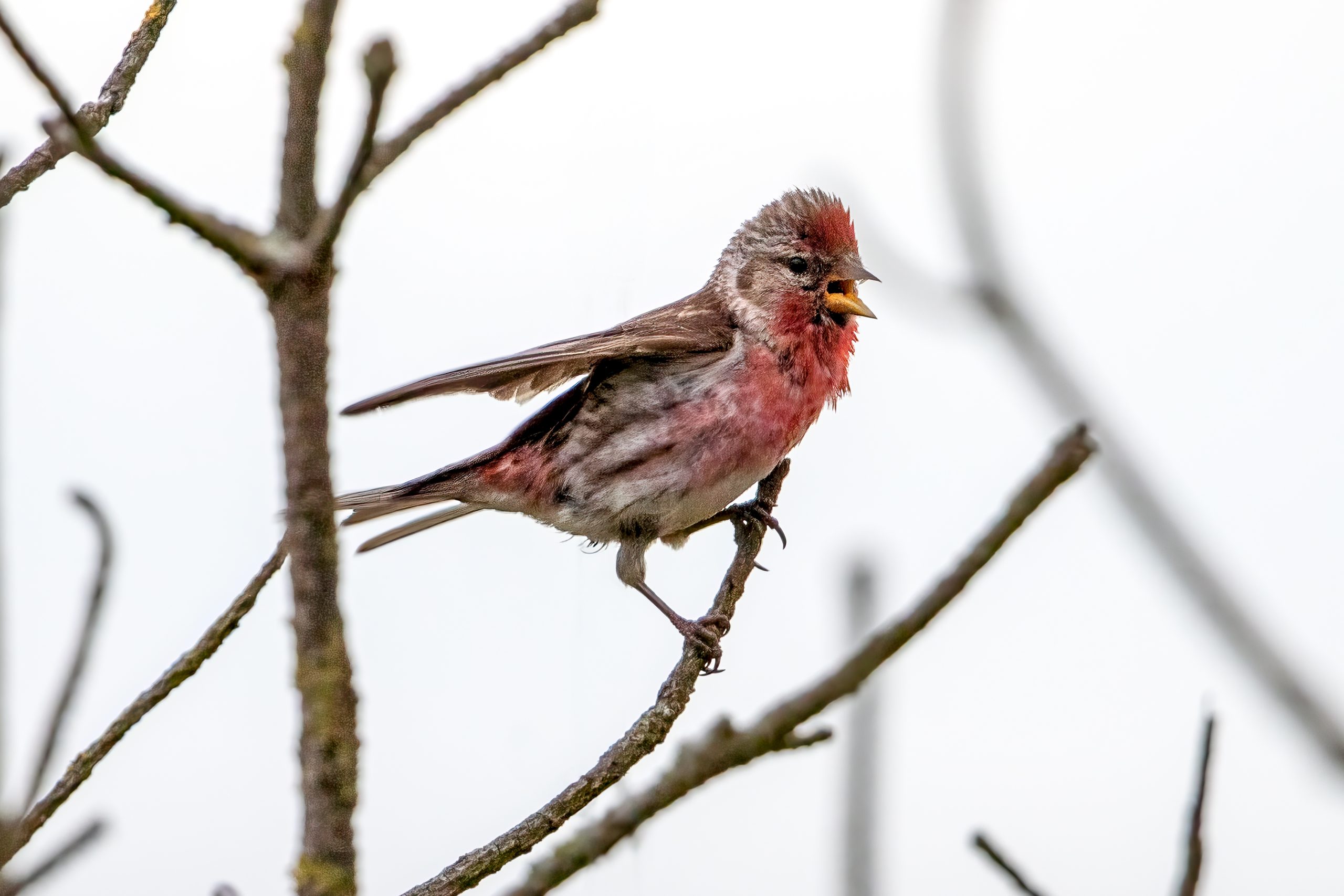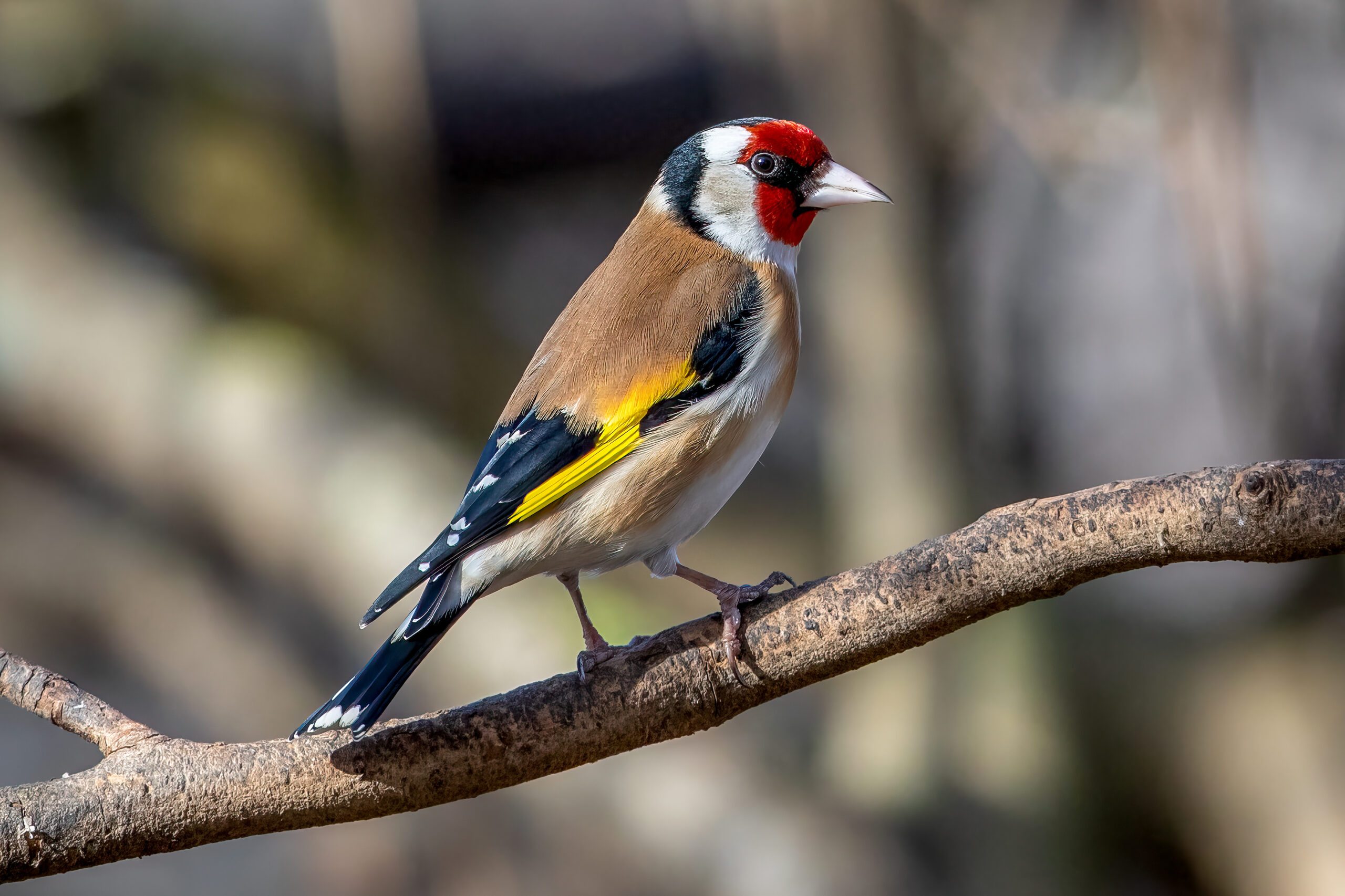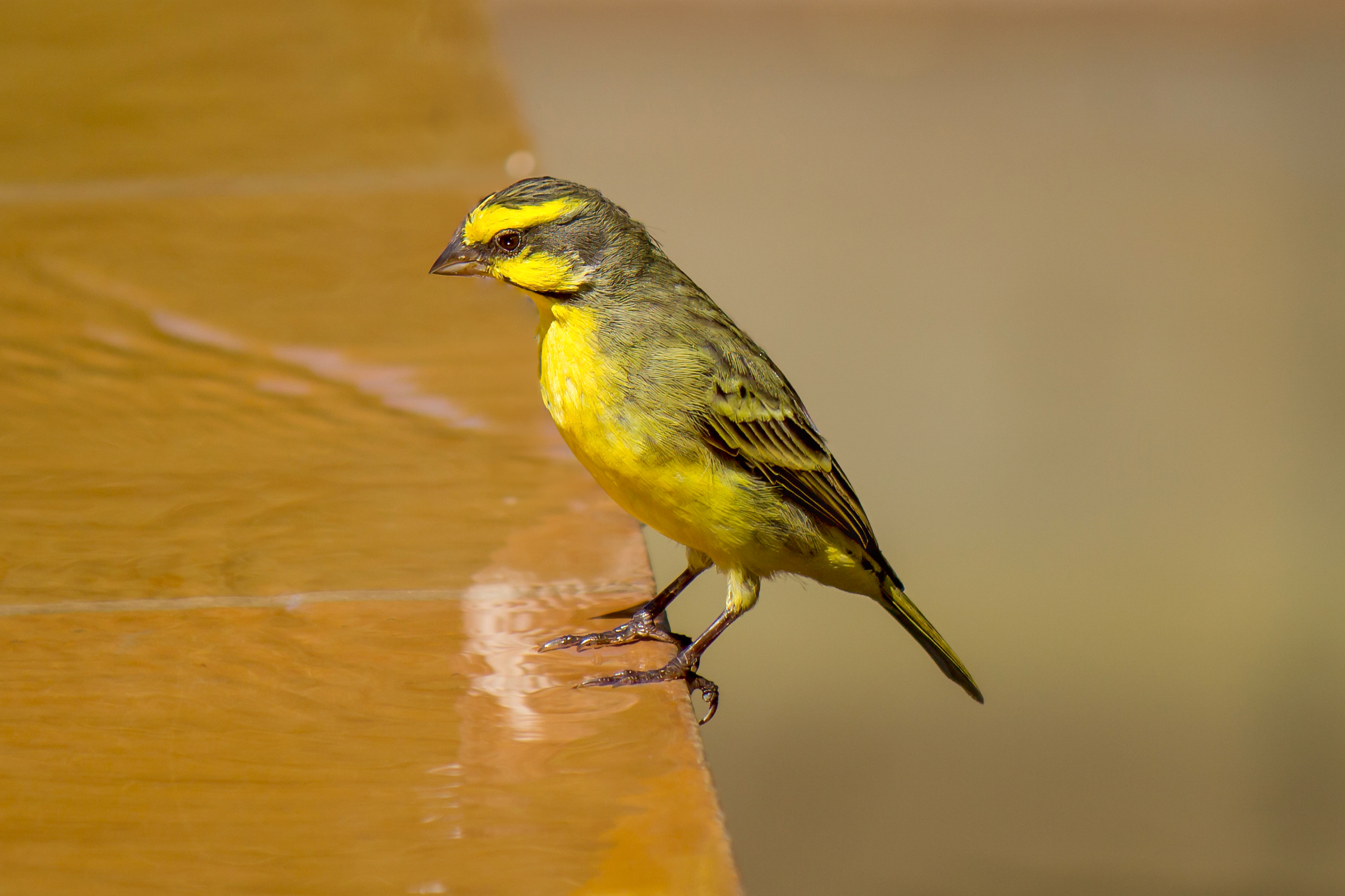Description
The common linnet (Linaria cannabina), also known as the Eurasian linnet, is a species of finch found across Europe, North Africa, and western Asia. It is distinguished by its slender body, forked tail, and a pointed bill. Adult males in breeding plumage are notable for their reddish-brown breast and forehead, contrasted by a grey nape and brown back. Females and non-breeding males are more subdued, with brown streaked plumage that offers excellent camouflage. This species measures about 13-14 cm (5-5.5 in) in length and has a wingspan of 21-25 cm (8.5-10 in). The common linnet can be differentiated from the closely related twite (Linaria flavirostris) by its lack of the twite’s yellow bill and lack of a distinct white rump. Twites also generally exhibit a more streaked appearance and lack the reddish tones seen in the linnet.
Diet & habitat
The common linnet inhabits open countryside, often found in hedgerows, farmland, and coastal areas. It prefers areas with abundant scrub or weedy vegetation, which provides both feeding and nesting sites. Primarily granivorous, the common linnet’s diet consists mainly of seeds from a variety of plants, including dandelions, thistles, and other weeds. During the breeding season, they may also consume insects to meet the higher protein demands. Linnets often feed in flocks, foraging on the ground or directly from plants. Their slender bill is well adapted for extracting seeds from small, tight clusters.
Migration
The common linnet exhibits partial migratory behavior. While populations in southern regions tend to be resident year-round, northern populations migrate southwards during winter, often to southern Europe or North Africa. Migration typically occurs from September to November, with birds returning to their breeding grounds from March to April. The migration distances can vary, with some individuals traveling several hundred kilometers.




